“And the Lord rained on Sodom and Gomorrah brimstone and fire from the Lord out of heaven, and He overthrew those cities, and all the valley, and all the inhabitants of the cities, and what grew on the ground. But his wife, from behind him, looked back; and she became a pillar of salt.Now Abraham arose early in the morning and went to the place where he had stood before the Lord; and he looked down toward Sodom and Gomorrah, and toward all the land of the valley, and he saw, and behold, the smoke of the land ascended like the smoke of a furnace. Thus it came about, when God destroyed the cities of the valley, that God remembered Abraham, and sent Lot out of the midst of the overthrow, when He overthrew the cities in which Lot lived.” -Genesis 19:24-29

Fig. 1 Ebla Archives
I. The Ebla Archives.
A. Discovery. The Royal Archives of Ebla, discovered at Tell Mardikh in Northern Syria 1976 date to the 24th century BC and afterwards. Initially 17,500 tablets were found; one of them spoke of another library, which was also found. The archives cover a considerable span of time ending just prior to the Patriarchal age. Considerable light was thrown on the earliest portions of the Bible from these archives, including deities also named in the Bible, personal names found also in the Bible, an “early stage” creation account, and place names found in the earliest portions of the Bible.
B. Deities at Ebla. Many of the deities mentioned at Ebla are also mentioned in the Bible: “Approximately five hundred deities are named in the Ebla tablets… The main god in Ebla was Dagan (grain), spelled Dagon in the OT… The Canaanite gods Baal and Haddad, variant names of the storm, were worshipped at Ebla, as were Ishtar (spelled Asherah), Kamish, Malik, Kemosh, and Molek, all mentioned in the OT. Some personal names end with il, which in the OT equals el (God). In some instances il is displaced with ia, which Pettinato equates with Yah (the first part of Yahweh), an equation denied by others… Pettinato’s claim that Sodom and Gomorrah appear on several tablets is a matter of controversy.” (G. H. Livingston, The Pentateuch in its Cultural Context, p. 295).
C. Biblical Personal Names at Ebla. Many of the names of persons early in Genesis are found in the Ebla archives as well. "Over ten thousand personal names are said to be recorded on the Ebla tablets, of which several thousand have been published. Names that are equivalent to those of some persons mentioned in the Old Testament are Adam, Eve, Jubal, Noah, Abram, Ishmael, Hagar, Keturah, Bilhah, Israel, Micah, Michael, Saul, and David" (Livingston, op cit).
D. Creation Account. Ebla creation accounts show the origin of the creation idea was not provincialistic, i.e. why their given nation is supreme, why one should serve their nation, rather it was distinctly theological & non-political. The Ebla creation account demonstrates the existence of elements of the Genesis creation narrative in uncorrupted (via mythology) form prior to the development of the mythological versions that Genesis was said by some to have borrowed from. This also calls severely into question the assumption, as held by some critical scholars, that the Genesis creation account did not originate until after the time of Solomon.
E. Biblical Place Names at Ebla. Many place names found in the Bible were discovered at Ebla, including Hazor, Lachish, Megiddo, Jerusalem, Gaza, Nahur (cf. Gen 11:24-26/ “Nahor”), and controversially, Sodom and Gomorrah.
II. Sodom and Gomorrah
A. Sodom and Gomorrah in Economic Trade Texts?! These cities and their destruction cannot be easily written off as mere literary myth as they once were. Giovanni Pettinato, initially the head epigrapher who translated the ancient Ebla archives, maintained that the names of Sodom and Gomorrah (si-da-mu and ì-ma-ar) appear on several Eblahite tablets, not in mythic tales, but in several economic texts which preserve records of trades which had been made between Ebla and Sodom and Gomorrah (cf. Shanks, Herschel, "BAR Interviews Giovanni Pettinato". Biblical Archaeology Review (Nov/Dec 1981).
B. Sodom/Gomorrah/Ebla Trade Route Specified.
The specific trade route by which goods were moved from Ebla to Sodom and Gomorrah and back was also specified in the Ebla archives; this route, which was called the King's Highway (first map and first photo below) is very well known to archaeologists. A modern road follows the same route taken by the King’s Highway through Wadi Wala. As the King’s Highway then lead to the southern tip of the Dead Sea, this provides strong confirmation of the traditional site of Sodom and Gomorrah along the southern shore of the Dead Sea.
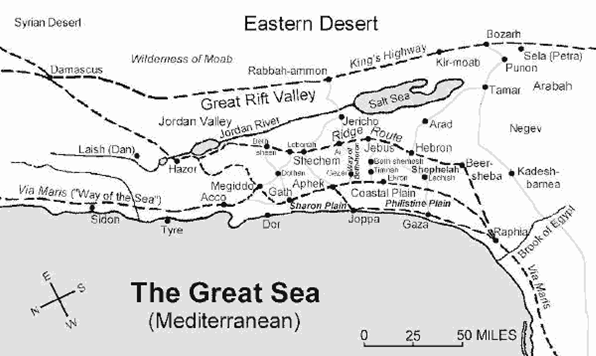
Fig. 2: Known Ancient Near Eastern Trade Routes
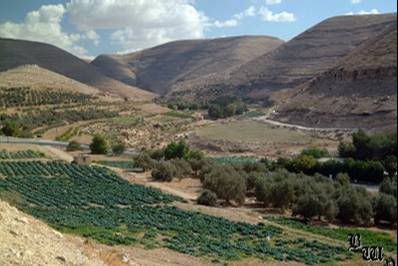
Fig. 3: The King's Highway
C. Mount Sodom (photo below). Jebel Usdum ("Mount of Sodom"), a mountain made of salt containing caves with spectacular soaring ceilings and located on the west side of the Dead Sea at the southern end. The ancient place name Usdum also is thought by philologists to preserve the name of Sodom.

Fig. 4 Jebel Usdum ("Mount of Sodom")
The archaeologist and popular author who took the photo below is standing in the midst of Sodomite ash deposits, which are typically about seven-feet deep. Splatter formations where molten bituminous material (asphalt-like, i.e. “brimstone”) once dropped from the Sodomite sky are present in this richly fertile area where cities once flourished. The shore of the Sea is peppered with huge pillars of salt.
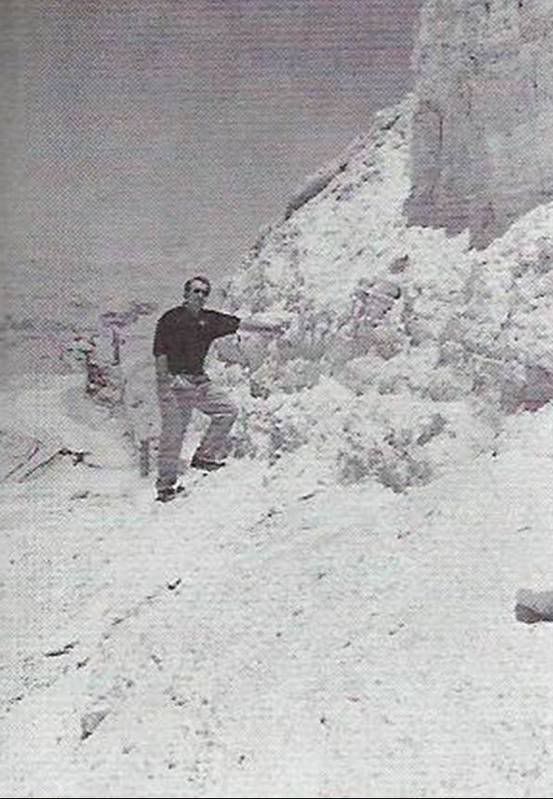
Fig. 5 Sodomite Ash: Seven Feet Deep!
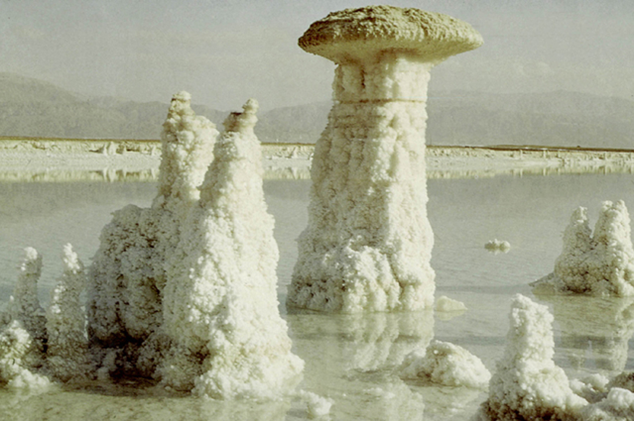
Fig. 6 Pillars of Salt (Dead Sea)
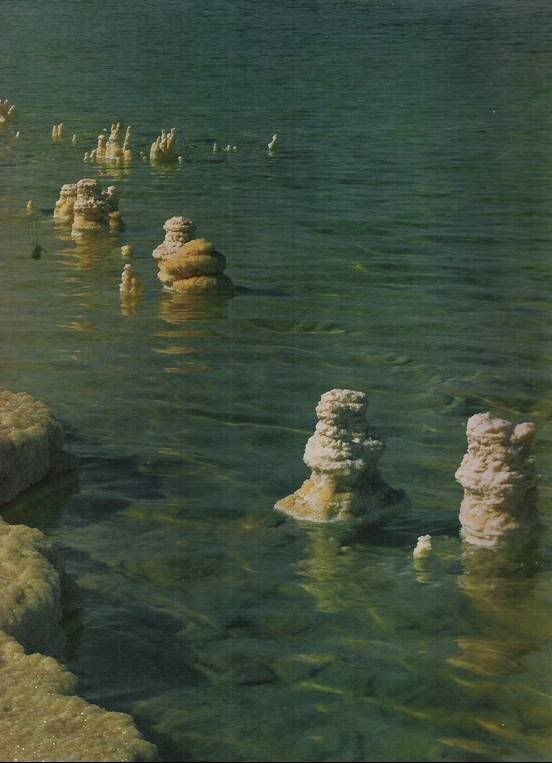
Fig. 7 Pillars of Salt (Dead Sea)
The Bible speaks of “five cities of the plain” of which Sodom and Gomorrah were two. Excavations at Bab edh-Dhra' about 5 miles from the Dead Sea SE of el-Lisan, indicate a steady stream of religious pilgrimages to the area from about 2300 B.C. to 1900 B.C. which ceased very abruptly. "The cessation of visits at that time implies the destruction of the cities of the plain, about 1900 B. C., and also furnishes support for the presence of Abram in Canaan at the end of the twentieth century B.C. God's destruction of Sodom most probably was produced by the combustion of petroleum gases emanating from the bituminous deposits in the area. This doubtlessly was accompanied by seismic disturbances, which caused the plain to sink some 6.1 m. (20 ft.) under the surface of the Dead Sea. In1953 the first oil well of the State of Israel went into production just north of Jebel Usdum, indicating significant petroleum deposits in the region. The heavy pall of smoke which Abram saw (Gen 19:28) would characterize ignited petroleum products." Blaiklock & Harrison, Eds., New International Dictionary of Biblical Archaeology. pp 418f. Considering the location of Sodom in time and space via the Ebla archives, it is quite likely the actual site of the city is, as many scholars believe, submerged under the waters of the Dead Sea south of the el-Lisan peninsula in what was originally "the Valley of Siddim, that is the Salt Sea" (Gen 14:3).
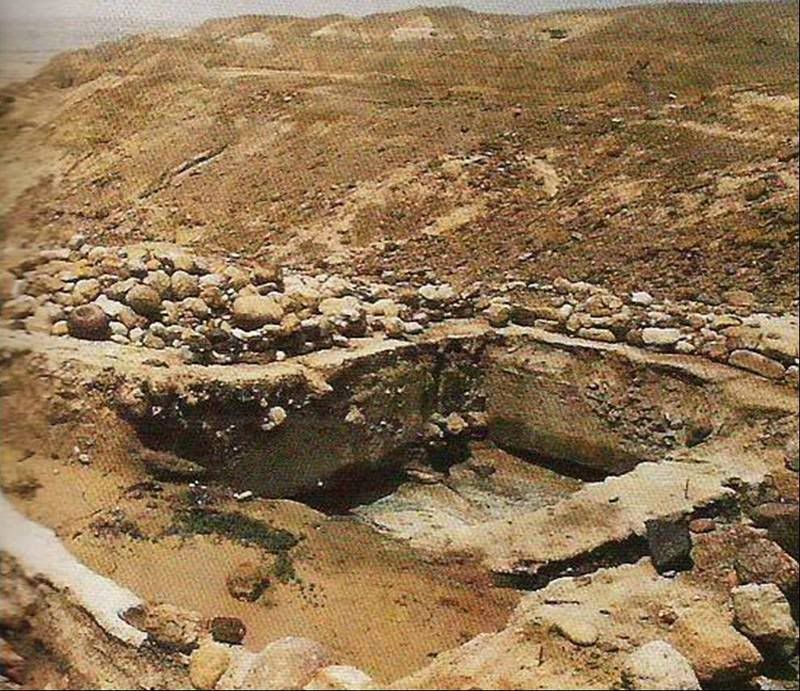
Fig. 8 Religious Pilgrimages Ceased Suddenly in Abraham's day.
"The Lord rained upon Sodom and Gomorrah brimstone and fire from the Lord out of heaven; and he overthrew those cities, and all the plain, and all the inhabitants of the cities, and that which grew upon the ground.“








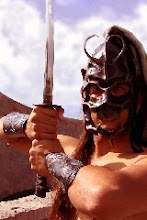
2 comments:
WOW. This is great. Do you mind if I use some of these pictures and words in my lesson plan on Thursday? I am teaching about Sodom and Gomorrah, and this would really be helpful. I will give you full credit, of course.
No problem; please let me know how the class goes (sirhemlock at gmail dot com)
Post a Comment